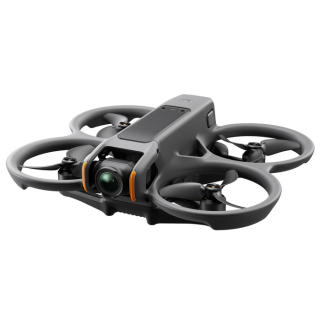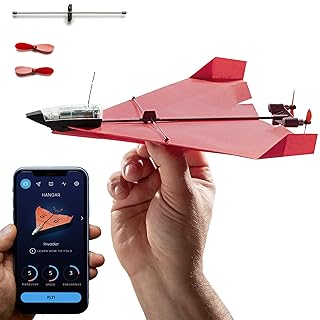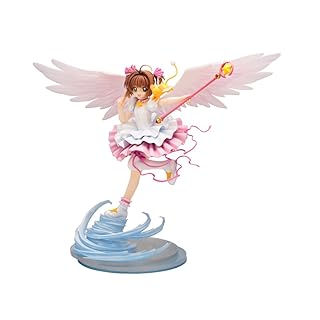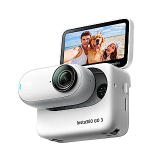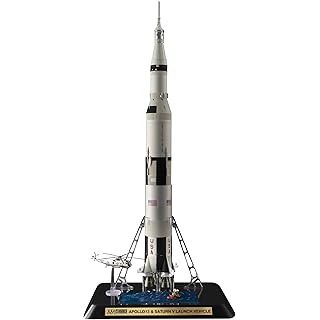 Drone flight rule in Japan and other countries
Drone flight rule in Japan and other countries
Currently, there are two rules in Japan that restrict drone flight.
All drones, including toy drones, regardless of weight, must comply with the
"Prohibition of Flight of UASs" (NPA:Japan National Police Agency)
promulgated on April 1, 2016.
And when flying a drone with a weight (including battery) of 100g (200g until June 19, 2022) or more, it is necessary to comply with
the Amended Aviation Law: “Flight Rules for Unmanned Aircraft”(MLIT:Ministry of Land, Infrastructure and Transport and Tourism)
that came into effect on December 10, 2015.
- Japan's drone flight rules in a nutshell
- New rules to be applied in Japan from December 5, 2022
- About drone qualification and flight conditions
- Drones that needs to comply with the “Prohibition of Flight of UASs”
- Drones that needs to comply with the “Flight Rules for Unmanned Aircraft”
- Rules to follow
- Registration in DIPS-REG and indicate registration ID
- Install remote ID function
- Use FPV goggles / 5GHz band radio
- Parks, historic sites, and other sightseeing spots
- How to check the Densely Inhabited District(DID)
- How to apply for flight permission
- Flying in the United States
- Flying in the UK
- Flying in the Australia
- Flying in Europe region
- Flying in other countries
Japan's drone flight rules in a nutshell
For the time being, I tried to summarize the Japanese flight rules of drones in one word.Drones with a takeoff weight of less than 100g (0.22lb) can be flown almost without restrictions when flying at an altitude of less than 150m (492.13ft), and away from government, nuclear, airport, and defense facilities. And when flying indoors, it can be flown almost without any restrictions, including take-off weight.
(According to Japan's Aviation Law, "takeoff weight" does not include the weight of removable accessories other than the battery.)
If you have a drone over 100g
If you have a drone with a takeoff weight of 100g or more (including toy drones and FPV drones), please pay particular attention to the following points when flying outdoors.
- It is necessary to register in DIPS-REG and indicate registration ID.
- It is necessary to install remote ID function. For this reason, it is necessary to have GPS installed.
- You can not fly in Densely Inhabited District(DID), even in your own garden.
- For FPV drones, the presence of a visual observer (a person who can directly see the flight and alert the pilot immediately if a problem occurs) is required during flight.

New rules to be applied in Japan from December 5, 2022
In Japan, the following new rules will apply from December 5, 2022.| No. | rule |
|---|---|
| 1 | When conducting flights that require approval or permission from the MLIT (Regional Aviation Administration) (=特定飛行:Specific Flights), depending on the conditions, it is necessary to obtain "Aircraft Authentication" for the aircraft used for the flight. And the pilots must also obtain a "Pilot Skill Certificate". |
About drone qualification and flight conditions
In Japan, there is no legal qualification necessary for maneuvering a drone (excluding 特定飛行:Specific Flights), whether for hobby or business use. Any drone that uses a transmitter that has obtained Japanese TELEC certification : Technical regulations conformity certification (Ministry of Internal Affairs and Communications) can fly without any qualification.However, the location and conditions where a drone can fly are stipulated in two laws: the “Amended Aviation Law” and the “Prohibition of Flight of UASs Law” (both are abbreviations). When flying in places and conditions that do not meet these rules, prior notification to the MLIT / NPA, and to obtain permission / approval is required. In that case, depending on the flight conditions, it is necessary to obtain an "Aircraft Authentication" for the aircraft to be used for the flight, and the pilot must obtain a "Pilot Skill Certificate".
In addition, wireless worker license is required to use FPV goggles that use radio waves in the 5 GHz band in Japan.
This page gives an overview of these two laws.
Drones that needs to comply with the “Prohibition of Flight of UASs”
All drones are subject to this rule. Regardless of weight, all drones including toy drone are eligible.Violation will result in imprisonment of up to one year or a fine of up to 500,000 JPY (about 4600 USD).
The jurisdiction of this rule is the NPA:Japan National Police Agency.
Drones that needs to comply with the “Flight Rules for Unmanned Aircraft”
This rule applies to drones with a weight of 100g(0.22lb) (200g(0.44lb) until June 19, 2022) or more including battery (Does not include the weight of removable accessories other than batteries). However, all drones are eligible for “Around the airport” and “150m or higher” rule (details below).Violation will result in a fine of up to 500,000 JPY (about 4600 USD). However, if you violate “Do not fly under the influence of alcohol or drugs”, you will be sentenced to imprisonment of up to 1 year or a fine of up to 300,000 JPY (about 2800 USD).
The jurisdiction of this rule is the MLIT:Ministry of Land, Infrastructure and Transport and Tourism.
Rules to follow
| explanatory | |
|---|---|
| Applies to all drones. | |
|
Applies to drones over 100g(0.22lb) (200g(0.44lb) until June 19, 2022) of takeoff weight.
("Takeoff weight" does not include the weight of removable accessories other than the battery) | |
“Prohibition of Flight of UASs”
| No. | Appl. | Rules |
|---|---|---|
| 1 | Flying over the Parliament, the Prime Minister's residence and other important facilities in the country, foreign diplomatic missions, Defense-related facilities, and the surrounding areas of the nuclear power plant is prohibited. | |
| 2 | Flight over the area designated by the Minister of Land, Infrastructure, Transport and Tourism (airport site/area and the area around 300m) is prohibited. The target airports are New Chitose(CTS) / Narita(NRT) / Tokyo(HND) / Chubu(NGO) / Kansai(KIX) / Osaka(ITM) / Fukuoka(FUK) / Naha(OKA). (Enforced on July 22, 2020) |
If you need to fly at or near prohibited facilities, you will need to notify the police station in writing with the permission of the facility manager.
The official name of this law is 重要施設の周辺地域の上空における小型無人機等の飛行の禁止に関する法律 (Japanese) (the law on the prohibition of flight of small unmanned aerial vehicles, etc. over the area around important facilities).
“Flight Rules for Unmanned Aircraft”
The rules are very common sense. If you are conscious of ensuring the safety of your surroundings, you can naturally comply with them. As long as you follow these rules, you don't need to apply for a flight.
As of June 20, 2022, the following four rules have been added.
| No. | Appl. | Rules |
|---|---|---|
| 1 |
For drones with a takeoff weight of 100g or more, it is necessary to
register each aircraft with DIPS-REG (drone registration system)
operated by Japanese Ministry of Land, Infrastructure, Transport and Tourism for a fee, and post the obtained "registration ID" on the aircraft.
How to use DIPS-REG (drone registration system) / How to get registration ID
|
|
| 2 |
Drones with a takeoff weight of 100g registered in DIPS-REG (drone registration system) after June 20, 2022 are required to be equipped with "remote ID" function (a function to wirelessly broadcast registration ID, etc. to the surroundings).
If this function is not installed, the flight method will be restricted, and it is practically only possible to fly indoors.
However, aircraft registered in the DIPS-REG by June 19, 2022 will be exempt from installation.
How to install a remote ID transmitter on a drone (for Japan)
|
As of September 18, 2019, the following four rules have been added.
| No. | Appl. | Rules |
|---|---|---|
| 1 | Do not fly under the influence of alcohol or drugs. | |
| 2 | Perform pre-flight confirmation. (Check equipment, flight airspace, weather, battery level) | |
| 3 | Fly to prevent collisions with aircraft or other unmanned aerial vehicles. | |
| 4 | Do not fly in such a way as to cause trouble for others. |
Specific Flights Part 1
Approval from the MLIT (Regional Aviation Administration) is required if it is necessary to make a flight that does not comply with the following rules (=特定飛行:Specific Flights). In that case, depending on the flight conditions, it is necessary to obtain an "Aircraft Authentication" for the aircraft to be used for the flight, and the pilot must obtain a "Pilot Skill Certificate".
| No. | Appl. | Rules |
|---|---|---|
| 1 | Fly during the day time (from sunrise to sunset). | |
| 2 |
The unmanned aircraft and its surroundings should always be monitored and fly within the range of visual (Line of Sight).
Flying with FPV goggles is not considered "visual" flight.
FPV drones / Racing drones
flights over 100g (200g until June 19, 2022) require the presence of a visual observer (a person who can directly see the flight and alert the pilot immediately if a problem occurs).
Will it be legal to fly DJI’s new FPV drone? People are asking… (dronedj)
|
|
| 3 | Fly with a distance of 30 m (about 100 ft) or more between a person (third party) or a property (third-party building, car, train, ship, etc.). | |
| 4 | Do not fly over festivals, fairs and other events where a large number of people gather. | |
| 5 | Do not transport hazardous materials such as explosives. | |
| 6 | Do not drop objects from unmanned aerial vehicles. |
Specific Flights Part 2
Permission from the MLIT (Regional Aviation Administration) is required to fly in the following locations (=特定飛行:Specific Flights). In that case, depending on the flight conditions, it is necessary to obtain an "Aircraft Authentication" for the aircraft to be used for the flight, and the pilot must obtain a "Pilot Skill Certificate".
| No. | Appl. | Rules |
|---|---|---|
| 1 |
Airspace around airports is prohibited.
At Tokyo(HND) / Narita(NRT) / Chubu(NGO) / Kansai(KIX) International Airports and airports specified by government ordinances, the airspace is generally within a radius of 24 km (about 15 mi), and other airports are within 6 km (about 3.8 mi).
At some airports ( New Chitose(CTS) / Narita(NRT) / Tokyo(HND) / Chubu(NGO) / Kansai(KIX) / Osaka(ITM) / Fukuoka(FUK) / Naha(OKA) ), airspace below the entry surface(進入表面) or transition surface(転移表面)(PDF:MLIT) or above the airport premises is prohibited. |
|
| 2 | An airspace at a height of 150m (about 493 ft) or more from the ground surface or water surface is prohibited. (Reference: Altitude 150m is minimum cruise flight altitude of aircraft.) | |
| 3 |
Above the
Densely Inhabited District (DID)
as a result of the latest census
(specific date of the census depends on the recommendation of the MLIT) is prohibited.
In a Densely Inhabited District (DID) , flying is prohibited even in the garden of your home (except indoors). Central Tokyo, and most major cities across Japan are designated as “DID”. |
|
| 4 |
Airspace around SAR (Search And Rescue) mission ( = 緊急用務空域 ) is banned from flying (added June 1, 2021).
This 緊急用務空域 is set by Civil Aviation Bureau each time so that disaster activities of manned aircraft can proceed smoothly in areas where disasters are occurring. You can check the setting status of this airspace on Drone flight rules page (MLIT) |
 Details of “Airspace around airports”
Details of “Airspace around airports”
Airspace with an altitude of 45 m or more (over the “horizontal surface”) within 4 km from the airport, airspace with an altitude of 45 m to 295 m or more within 4 to 18.5 km from the airport: Restricted altitude varies with distance (above the “conical surface”), airport within 18.5 to 24km from the airspace above 295m altitude (above the “outer horizontal surface”) are not allowed to fly. Please refer to the MLIT material for the explanation of “horizontal surface(水平表面)”, “conical surface(円錐表面)” and “outer horizontal surface(外側水平表面)”.
 Registration in DIPS-REG and indicate registration ID
Registration in DIPS-REG and indicate registration ID
Drones with a takeoff weight of 100g or more, including batteries, must be registered in the "DIPS-REG (drone registration system)" operated by MLIT Japan to obtain a "registration ID" and indicate it on the aircraft.
This system will come into effect on June 20, 2022.
Drone registration is aleady available from December 20, 2021.
See below for details.
 Install remote ID function
Install remote ID function
Aircraft registered in "DIPS-REG (drone registration system)" after June 20, 2022 are required to be equipped with remote ID function (a function to wirelessly broadcast registration ID, etc. to the surroundings).
Since the remote ID function includes notification of location information, GPS must also be installed.
The flight method will be restricted without remote ID function.
In other words, it is only permitted to fly over the area notified to MLIT after taking necessary measures, or to fly while moored on the ground with a wire.
It is practically only possible to fly indoors.
However, aircraft registered by June 19, 2022 will be exempt from installing this remote ID function. The above restrictions do not occur. See below for details.
 Use FPV goggles / 5GHz band radio
Use FPV goggles / 5GHz band radio
Apart from the above two laws, the use of radio waves is regulated by the Radio Law, which is managed by the Ministry of Internal Affairs and Communications(MIC).
| No. | Appl. | Rules |
|---|---|---|
| 1 | When using the 5.8GHz band radio, or using a 2.4GHz band with output power of more than 10mW / MHz outdoors, the pilot must obtain a radio engineer license, and the transmitter (drone) must have a radio station license. Also, transmitters whose output power exceeds 1W are prohibited. |
Please note that some drones made outside of Japan use 5GHz radio for their control.
[reference] For some drone products, the instructions for the transmission power are written in "dBm" instead of "mW". To convert “dBm” to “mW”, calculate “10 ^ ([dBm] / 10)”. Conversely, to convert “mW” to “dBm”, calculate “10 * LOG ([mW])”. Further more, if the communication method is wireless LAN, the bandwidth of 20MHz is used per channel, so to get “mW / MHz”value, divide the value of “mW” by 20 (40 for 11n, 80 for 11ac).
 Parks, historic sites, and other sightseeing spots
Parks, historic sites, and other sightseeing spots
In addition to the laws listed above, there are parks, historic sites, and other sightseeing spots that prohibit the use of drones and radio-controlled aircraft personally.
Look carefully at the official website, bulletin board notices, pamphlets, and signboards at each spot, and follow the instructions.
 How to check the Densely Inhabited District(DID)
How to check the Densely Inhabited District(DID)
Here is an easy way to check “Densely Inhabited District (DID)” on the map where a drone with a battery weight of 100g (200g until June 19, 2022) or more is prohibited from flying.
Using the GSI map
 Open
GSI map : DID and Airspace around airports
operated by the Geospatial Information Authority of Japan (GSI).
Then click “OK”.
Open
GSI map : DID and Airspace around airports
operated by the Geospatial Information Authority of Japan (GSI).
Then click “OK”.
 Drag the map or zoom in / out with the scroll wheel to display the map of the location you want to check.
“Densely Inhabited District(DID)” is surrounded by a red frame, and “Airspace around airports” is surrounded by a green frame.
As you can see, the center of Tokyo and its surrounding areas are all designated as DID, so drones over 100g (200g until June 19, 2022) are prohibited from flying.
Drag the map or zoom in / out with the scroll wheel to display the map of the location you want to check.
“Densely Inhabited District(DID)” is surrounded by a red frame, and “Airspace around airports” is surrounded by a green frame.
As you can see, the center of Tokyo and its surrounding areas are all designated as DID, so drones over 100g (200g until June 19, 2022) are prohibited from flying.
Using the jSTAT MAP
 Open
jSTAT MAP
, one of the e-Stat services operated by the Statistics Bureau of the Ministry of Internal Affairs and Communications (MIC).
For now, click “ログインしないでGISを始める(Start GIS without log in)”.
Open
jSTAT MAP
, one of the e-Stat services operated by the Statistics Bureau of the Ministry of Internal Affairs and Communications (MIC).
For now, click “ログインしないでGISを始める(Start GIS without log in)”.
 Drag the map or zoom in / out with the scroll wheel to display the map of the location you want to check.
Then, select “人口集中地区(DID)” from the “行政界(Administrative World)” menu at the top right of the screen.
Drag the map or zoom in / out with the scroll wheel to display the map of the location you want to check.
Then, select “人口集中地区(DID)” from the “行政界(Administrative World)” menu at the top right of the screen.
 “Densely Inhabited District(DID)” is surrounded by a red frame.
As you can see, the center of Tokyo and its surrounding areas are all designated as DID, so drones over 100g (200g until June 19, 2022) are prohibited from flying.
“Densely Inhabited District(DID)” is surrounded by a red frame.
As you can see, the center of Tokyo and its surrounding areas are all designated as DID, so drones over 100g (200g until June 19, 2022) are prohibited from flying.
 How to apply for flight permission
How to apply for flight permission
“Prohibition of Flight of UASs”
If you want to fly in a place prohibited by this law, first obtain the permission of the target facility's administrator / right holder, and at least 48 hours before the flight, it is necessary to make a prior written report to the prefectural public safety committee via the police station, accompanied by the drone itself or a photograph of the drone. See below for details (Japanese).
“Flight Rules for Unmanned Aircraft”
If you want to fly in a place / situation that deviates from the “rules to be observed”(= making a Specific Flight) above, you need to get approval or permission by submit an application by postal mail, at least 10 days (excluding weekends and holidays) before the scheduled flight start date. There are two submission destinations depending on the flight conditions. If you want to fly "Airspace around airports" or "height more than 150 m", submit it to the airport office that has jurisdiction over the airspace to fly. All other applications will be submitted to the local air station (Tokyo Air Station or Osaka Air Station) that has jurisdiction over the airspace to fly. You can apply electronically from the web site DIPS : https://www.dips.mlit.go.jp/portal/ (Japanese). See below for details (Japanese).
Flying in the United States
In the United States and other countries, there are differences in the rules depending on whether takeoff weight is 250g or more. However, the only difference between a drone weighing less than 250g and a heavier drone in the United States is aircraft registration requirement shown below. Please note that other flight rules apply to drones of all weights.Drone registration
If you fly a drone in the U.S. that weighs more than 250 grams (0.55 pounds), you must obtain one registration number for each pilot on the FAADroneZone:Federal Aviation Administration site Must be posted on the drone body. And you must then pass the online quiz The Recreational UAS Safety Test (TRUST)(FAA) and carry your certificate with you. (You can read more about non-US procedures on this page (FAA) .)
All you need to register is the pilot's name, email, address and a registration fee of USD5.00 per case. (Currently, the payment of the registration fee is only required for identity verification and will be refunded at a later date.) Registration takes about 5 to 10 minutes. When you register, you will get a “UAS Certificate” and a 10-digit registration number. The registration number must be posted on the drone and the “UAS Certificate” must be worn during flight (print, copy, digital image data is acceptable).
The “UAS Certificate” is valid for three years. After expiration, you need to pay a registration fee of USD5.00 to renew / re-acquire.
In addition, after April 21, 2021, drones weighing more than 250 grams will be required to use a "Remode ID" that uses a Wi-Fi antenna to transmit their flight position to the surroundings (Currently, drones that do not have the sending function are exempt). Drones released after December 16, 2022 must have this feature, and after October 2023 they will need to use this feature. However, you may fly without a Remode ID device in FRIAs (FAA Authorized Identification Areas), which can be found on the FRIA map (FAA) . You can read about Remode ID on this page (FAA) .
Difference in the concept of takeoff weight
It should be noted that there is a difference in the concept of takeoff weight between Japan and EU, U.S.A. The 100g (200g until June 19, 2022) limit in Japan is “does not include the weight of removable accessories other than the battery”, while the 250g limit in Europe and the United States is “includes all takeoff equipment including batteries”.
Where you can fly, flight rules
The same rules as in Japan are established for the places where you can fly and the flight rules. Specifically, you can read on this page (FAA) . An application called "B4UFLY"(FAA) that allows you to check where you can fly is available. For more information, see the How to use B4UFLY app page.
In addition, to fly in a controlled airspace such as around an airport, you must access the LAANC ( Low Altitude Authorization and Notification Capability )(FAA) system and obtain a flight permit. Even in this case, you can fly up to 400ft (about 121m). This system has been available to hobby users since July 23, 2019. To access LAANC, use an app provided by technology provider either kittyhawk, UASidekick, Airmap.
Flying in the UK
In the UK, the Civil Aviation Authority (CAA) has set rules for flying hobby drones. To fly a drone weighing 250 grams or more, you need to register your Flyer ID and Operator ID online, and for drones that weigh less than 250 grams but have a camera, you need to register your Operator ID. Registration costs £ 9 and must be renewed annually. You must also take a free online education package. This content is updated every three years.Details can be read on the following site.
Flying in the Australia
In the Australia, the Civil Aviation Safety Authority (CASA) has set rules for flying hobby drones. To fly a drone weighing more than 250 grams for hobby, you need to answer the quiz correctly on the Knowyourdrone (CASA) and register the aircraft serial number, manufacturer, model, weight, and type of drone in myCASA (CASA) . Pilots must be 16 years of age or older, have an Australian or home country passport, and have an Aviation Reference Number (ARN) on myCASA. This registration must be renewed annually.Details can be read on the following site.
Flying in Europe region
In Europe, European Union Aviation Safety Agency (EASA) oversees the rules, and each country has detailed rules. The Civil drones page (EASA) provides basic information and animated video EASA Drones-Safe drone operations (YouTube) . Drones page (EASA) also provides a collection of links to related pages in European countries.Register as a drone pilot on the site of the first EASA member country you visit. Registration will automatically be valid in all EASA member countries. You will also have to pass the EU Drone Pilot Online Exam and obtain a certificate of competence.
Flying in other countries
Each country has its own rules for flying drones at the aviation bureaus in that country. If you plan to fly in other countries, check the rules in advance with the aviation offices of each country. Especially in the Middle East and Europe, rules are strict, and some countries prohibit aerial photography. In fact, there have been cases where foreign tourists who flew in countries where aerial photography was prohibited were detained in local prisons.Search for keywords such as "drone flight rules (country name)" to find sites that post rules for each country.










